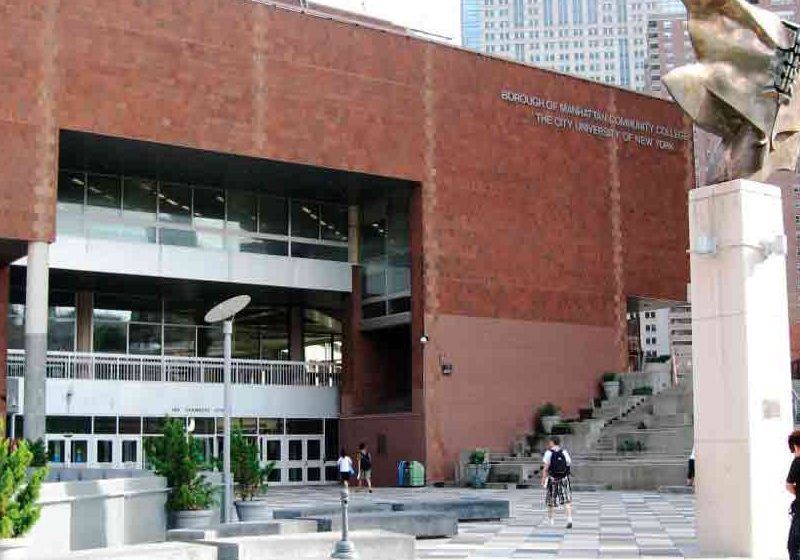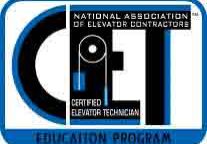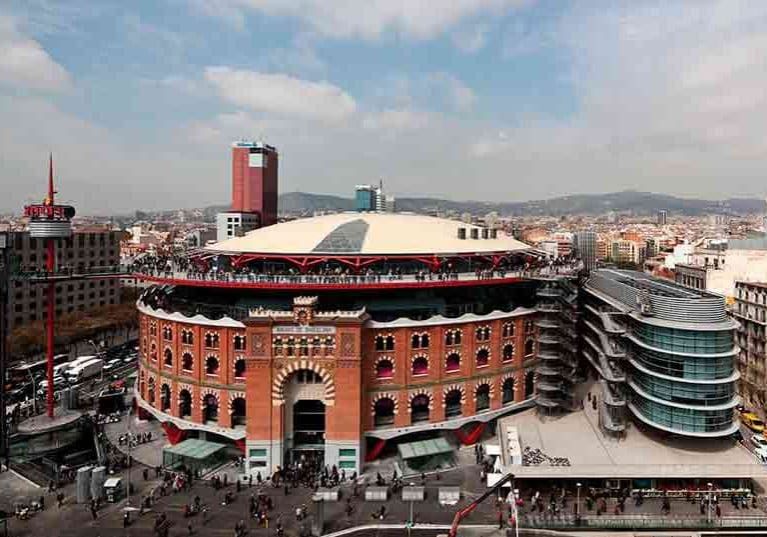A global overview of various elevator regulations
Elevator inspections and certifications are performed in different ways around the world. With the globalization of the elevator market, challenges arise when local manufacturers want to export to another part the world. At the same time, local authorities have to deal with foreign-certified products. Liftinstituut is both a Notified Body (NB) for elevators and machinery and an Accredited Elevator/Escalator Certification Organization (AECO). This combination enables Liftinstituut to work worldwide. For elevator manufacturers, knowledge of the local and export markets are essential before even attempting to release a product. If we look at certification, there are global regulations for certification bodies. These standards are used by accreditation bodies such as the American National Standards Institute (ANSI), Standards Council of Canada (SCC) or other local bodies to ensure a certification organization is performing tasks correctly and independently. This article provides a global overview of various elevator regulations.
Europe
The European Union (EU) started with six member states and currently consists of 27 member states. There are also countries that are not members of the EU but part of its free-trade zone, the European Economic Area (EEA). Therefore, they accept European regulations laid down in the directives. The EEA includes Norway, Liechtenstein and Iceland. Switzerland, though not an EEA member has a similar agreement with the EU. Turkey also has a special position. In order to become a member state, Turkey implemented European regulations, like the Lift Directive, into its National regulations.
Lift Directive 95/16/EC
Lift Directive 95/16/EC was initially designed to allow free trade between EU countries. To get a product accepted, a minimum safety level had to be defined. The Lift Directive is under the Machinery Directive and came into force on July 1, 1997, with a two-year transition period. A successor of the current directive is under development.
The Lift Directive describes the process for the design and certification of elevators and safety components. The considered safety components are:
- Landing-door locking devices
- Devices to prevent the car from falling or making unchecked upward movements (e.g., safety gears)
- Overspeed limitation devices (e.g., overspeed governors)
- Shock absorbers: Nonlinear, energy accumulating (e.g., polyurethane buffer) or energy dissipating (e.g., hydraulic buffer)
- Safety devices fitted to the jacks of hydraulic power circuits where these are used as devices to prevent falls (e.g., rupture valves)
- Electric safety devices in the form of safety switches containing electronic components (e.g., Programmable Electronic System in Safety Related Applications for Lifts)
The essential safety requirements in the directive are not prescriptive like a standard. To comply with the Lift Directive, EN 81-1 or EN 81-2 can be followed. Deviations from EN 81-1 or EN 81-2 are additionally certified by an NB. Deviations are not allowed, with one exception. In an existing building, and with prior approval of the member state, one can deviate from the requirement of the free space on the top or bottom of the hoistway.
To put an elevator into service, several paths can be followed. A full quality system certified by an NB can be used to design, produce, install, test and put into service elevators complying with EN 81-1 or EN 81-2. Furthermore, an elevator can have an EU-type examination, where a complete elevator range can be certified by an NB. The installation and putting into service can be performed by a company with a quality-assurance system certified by an NB, or an NB can perform a final inspection before the elevator is put into service. For small companies with custom-made elevators, unit verification is an ideal solution. During the unit verification, the complete design of the elevator and the installed elevator are examined by an NB.
For elevator installations, many other European Directives must be followed, and the most important is Machinery Directive 2006/42/EC. This directive is the base of the Lift Directive, which refers back to the Machinery Directive for hazards not considered in the Lift Directive. Other important directives include Low Voltage Directive 2006/95/EC and Electro Magnetic Compatibility Directive 2004/108/EC.
EN 81-1 and EN 81-2
EN 81-1 and EN 81-2 are the European elevator standards. EN 81-1 is the standard for electric or traction elevators; EN 81-2 is the standard for hydraulic elevators. Lift regulations in Europe emerged in the 1920s, and each country had its own standard. The first European standard and version of EN 81-1 was established in 1977. The latest version is EN 81-1:1998+A3:2009. This standard incorporates machine-room-less (MRL) designs and programmable electronic safety systems for lifts. The standard was also put in line with the recently updated Machinery Directive 2006/42/EC. Amendment 3 (A3) is the last amendment. The new elevator standard will be EN 81-20 and EN 81-50. The first draft version is out for review and comment. The comments received covered hundreds of pages and originate from around the world. The standard is expected to be final around 2014.
NB
An NB is an organization appointed by the local government and registered in Brussels. The local government (member state) sets the minimum requirements for the NB. Liftinstituut was the first NB for elevators in Europe. In Germany, accreditation is required, though this may not be the case in other countries. Many NBs have voluntary accreditation. If the proposal for the new Lift Directive is accepted and put into force, all NBs need accreditation as a minimum.
Local Inspection Bodies
Periodic and handover inspections are regulated in national legislation. Each country has its own regulation based on experience. Some countries require annual periodic inspections, some every 18 months and others do not have any such requirements.
North America
Since 2007, the U.S. and Canada have had one combined elevator standard – ASME A17.1/CSA B44. Before, there were differences between the A17.1 and the B44 standards. The first version of A17.1 was published in 1921 and the latest in 2010. A public draft of the 2013 is out for review. Deviations from the standard are possible by applying for a variance with the local authority. Together, with the publication of A17.1/B44, 2007, another standard was introduced. A17.7/B44.7 is a standard that describes the process for certification of a deviation of A17.1/B44. The certification is performed by an AECO. The process includes testing, preparation of a risk assessment, etc.
A17.7/B44.7 is not accepted everywhere in the U.S. However, some AHJs will accept the certificate of conformance during the application of a variance with the complete technical file.
There are some misconceptions about A17.7/B44.7. For example, the standard does not enable 1:1 approval of Lift Directive/EN 81-1 or EN 81-2 approved elevators. Furthermore, A17.7/CSA B44.7 does not cover deviations from electrical requirements (National Electrical Code or Canadian Electric Code), building requirements (e.g., International Building Code, National Building Code and Canadian Building Code) and fire regulations.
AECO
The term AECO was introduced in combination with that of A17.7/B44.7. An AECO is a similar organization to an NB. An AECO is accredited by ANSI and/or SCC and performs examinations according to A17.7/B44.7. Currently, there are three AECOs: Liftinstituut, TÜV SÜD America Inc. and Underwriters Laboratories Inc.
AHJs and Regulatory Authorities (RAs)
Periodic inspections and handover inspections are regulated in local legislation. Each state and/or city has its own regulations. In the U.S., there are approximately 130 different AHJs. In Canada, there are 13 RAs. Each state/city can have additional regulations on top of the existing regulations. Not all states/cities have adopted the same version of the standard: some have adopted the 2010 version, whereas others still work with the 1996 version. In Canada, authorities have adopted the latest version of A17.1/B44. Inspectors can be government employees or independent. They need QEI qualification in the U.S. To find out the regulations applied in each state or city, the National Elevator, Industry Inc. (NEII®) has a codefinding database available to its members.
Nationally Recognized Testing Laboratory (NRTL)
An NRTL is a laboratory accredited by OHSA for a specific field. The field applicable for elevators is A17.5. ASME A17.5 has specific electrical requirements for elevator components. There are several NRTLs with A17.5 field accreditation. Examples are the Canadian Standards Association (CSA) and Intertek Testing Services NA.
Russia
The Russian Federation has its own elevator standard. Previously known as the Pübel standard, the current version is the GOST R. The content of the GOST R code is similar to that of EN 81-1-2. For safety components, local approvals must be obtained. The local approval may be obtained by a Certification Body or Testing Center (Certification Body plus Testing Body). Certifying organizations are supervised and licensed by Rostekhnadzor, a govermental agency.
Japan
The safety requirements for elevators are part of the building regulations of Japan. In 1950, the Building Standard Law of Japan (BSLJ) was established. In the following years, additional standards were made: JIS A 4301: Size of Cars and Hoist Ways of Elevators in 1957 and JIS A 4302: Inspection Standard in 1964.
In 2000, the BSLJ was amended to enforce performance-based codes for MRL applications. In 2009, requirements for detection of uncontrolled movement and the requirement for a double brake were implemented in the amendment of BSLJ-Enforcement Orders and Notices. The latest development is the drafting of a new document “2011/2/16 TS A 0028-1,” which is based on EN 81 and the Japanese building laws.
China
China is the largest elevator market in the world and has a code similar to EN 81. The GB/T 10058 code is converted from an older version of EN 81-1 and is currently under revision. All safety components must be tested by local laboratories. Periodic inspections for elevators are under development, and currently, there are only requirements for public buildings.
India
India is the second-largest elevator market in the world. Initially, imported elevators were allowed to comply to the manufacturers’ standards. Therefore, the standards ranged from European to American to Japanese standards. The first Indian Standard (IS) for elevators was IS 3534 established in 1979. In 2000, IS 14665 succeeded IS 3534. In 2007, IS 15785, which describes MRL elevators, was introduced. Currently, the IS committee is working on a new standard, which will conform more closely to the current version of EN 81.
Global Certification
Globally harmonizing all existing elevator standards is almost impossible, even though the majority of elevator standards are based on EN 81-1. A better insight into the differences between the standards is needed with the globalization of the market. International Standards Organization Technical Committee 178 on lifts, escalators and moving walks created a document where EN 81-1 and EN 81-2, A17.1, Japanese Industrial Standard (JIS), and the Australian AS 1735-1 and AS 1735-2 are compared. The Russian standard was not included because of the major changes in the government and the elevator regulations at the time of preparation. This comparison document was made for both traction (ISO/TR 11071-1:2004) and hydraulic elevators (ISO/TR 11071-2:2006).
With the document, people around the world are able to compare and justify solutions from other standards. The ISO/TS 22559 series was made to define a common global level of safety for elevators. The additional goals are to facilitate innovation of elevators and help remove trade barriers. There are four parts as of August:
- ISO/TS 22559-1: Global Essential Safety Requirements (GESRs)
- ISO/TS 22559-2: Global Safety Parameters
- ISO/TS 22559-3: Global Conformity Assessment Procedures (GCAPs) – Prerequisites for certification of conformity
- ISO/TS 22559-4: GCAP – Certification and accreditation requirements
ISO/TS 22559-1 describes GESRs, which can be compared with the essential health and safety requirements from Annex I of the Lift Directive and the GESRs of A17.7/B44.7. GESRs include requirements to ensure the safety of lift users and nonusers. For example, it requires a measure to prevent the car from falling when its suspension is lost.
ISO/TS22559-2 describes the safety parameters, which are more prescriptive requirements and can be linked to requirements in A17.1/B44 and EN 81-1 or EN 81-2. ISO/TS22559-3 describes the certification process, including which documents are needed and which tasks must be performed to get a certificate of conformance. The certificate of conformance is comparable to an EU-type examination certificate according to the Lift Directive or certificate of conformance according to A17.7/B44.7.
The last part, ISO/TS 22559-4, describes the requirements for a Global Conformity Assessment Body (GCAB), which is the global equivalent of an NB or an AECO. At this time, there are no GCABs. Liftinstituut will apply for a GCAB, when possible. However, there are additional hurdles for elevator manufacturers. One global standard for elevators does not solve all the problems, and many local regulations have to be followed. Building, electrical and fire regulations are not considered in the current proposal. Even within Europe, differences still exist among member states. For example, the minimum-landing door height is 2,000 mm in EN 81-1, whereas in the Netherlands and other northern European countries, a minimum door height of 2,100 mm is required by the building regulations. Though work has begun and progress is being made, true global conformity remains a long way off.
Get more of Elevator World. Sign up for our free e-newsletter.








